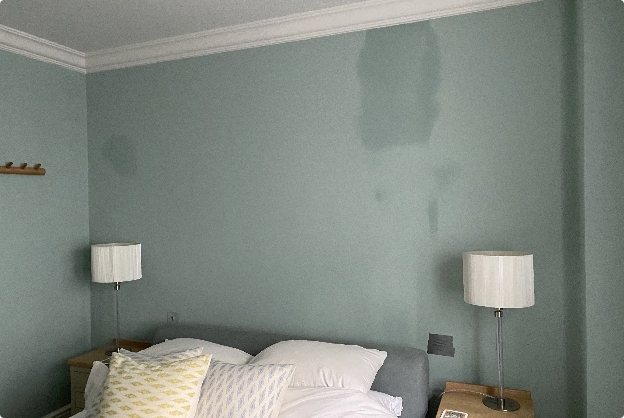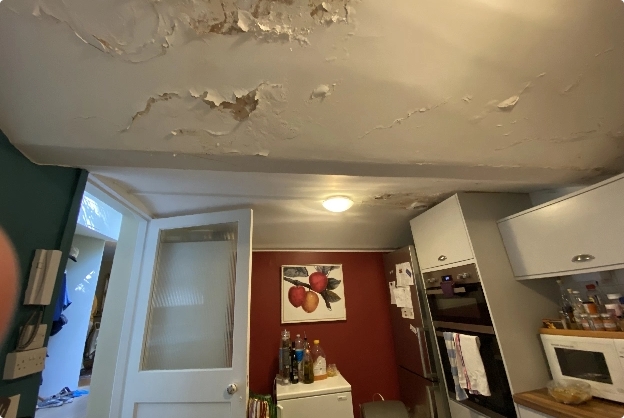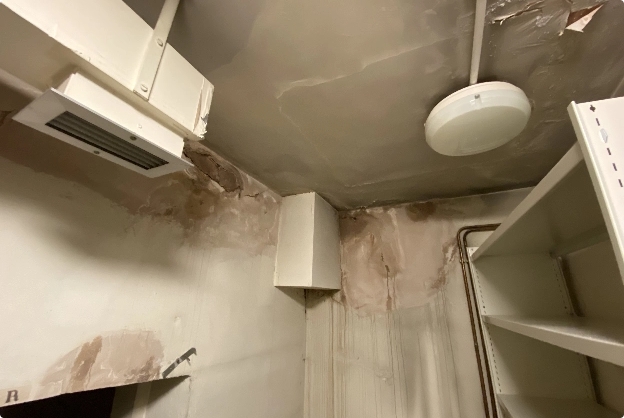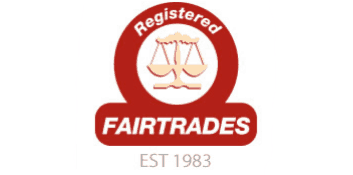Do you think your home has penetrating damp?
Penetrating damp can be witnessed in buildings of any age when there is excessive rain to face or older structures with porous bricks or blocked gutters and cracked roofing. Whatever the situation, penetrative damp can seriously harm both the structure and the occupants. Penetrative damp is nothing but rainwater penetrating the masonry.
Penetrative damp is also known as rain penetration and it is caused by the horizontal movement of moisture or rainwater seeping through the walls at random points at all levels of a building, forming isolated patches of dampness on external walls after heavy rain. Rain penetration affects poorly installed wall ties or cavity walls, internal walls and buildings with solid wall construction.
Penetrative damp is mainly caused by a defective building or the presence of porous bricks allowing water to permeate through the walls.
Watch this video to find out more!



Signs of Penetrative Damp
- Damp patches at any level on internal walls that don’t dry
- Deterioration of plaster and paint
- Appearance of blisters, stain and salt
- Timber starting to decay and rot
- Skirting boards and window frames rotting
- Mould growth on internal decorations
- Damp as well as mould smell
- Moss growth on external walls
Penetrative damp can be identified with watermarks or damp patches isolated from windows or doors at any height
High readings can be found on the moisture detector while its raining but can also show low moisture readings when its dry.
Fix the problem at once, call in the experts at London Damp Specialists on 020 7458 4864.
What causes penetrating damp?
Rainwater permeating the wall horizontally is known as penetrating damp, and it is frequently the result of blown renders, clogged gutters, and downpipes. Additionally, roofing and window casings need to be inspected for deterioration, rotting, and cracks.
External basement and retaining walls must be protected from constant moisture intrusion by tanking treatments and interior walls by a chemical DPC and waterproof renders.
Building defects such as faulty roofs or windows must be rectified with proficient builders.
How to treat penetrative damp
Penetrative damp treatment is more sophisticated than ever before.
Penetrative damp caused by poor cavity wall construction and wall tie installation on the damp internal walls can be set right with damp proof renders. It is occasionally necessary to treat exterior walls with water-repellent creams and paints in addition to weather-resistant paints and coatings. Blocked gutters and downpipes must be cleaned and cracked roof tiles must be repaired.
Breathable colourless water repellents allow moisture to escape rather than blocking them. Window sills and other water storage must be cleaned from dirt, moss growth and leaves.
Cement tanking and render systems can be introduced to treat penetrative damp problems caused by high external ground levels.
Penetrating damp treatments can include:
- Plaster removal
- Salt neutraliser
- Tanking Slurry
- Waterproof render
- Applying skim coat plaster
- Applying new external render
- Sealing exterior walls with clear waterproof sealer
All our work is covered by a no-quibble 30 year guarantee at no additional cost.
Penetrating damp is a serious, complex problem
Which is why 1000’s of home owners have used London Damp Specialists. If you need expertise and skilled Damp Specialists Book your free survey today or call us direct on 020 7458 4864.
FREQUENTLY ASKED QUESTIONS
Regular Inspection and Maintenance: Regularly inspecting the property for signs of wear and tear, especially in areas prone to damp, can help catch issues early. This includes checking for cracked roofing, blocked gutters, and porous bricks.
Proper Construction and Building Materials: Ensuring that the building is constructed with appropriate materials and techniques can prevent water from penetrating the masonry. This includes using non-porous bricks and proper wall ties.
Waterproofing: Applying waterproofing treatments to external walls can create a barrier that prevents rainwater from seeping through.
Gutter and Drain Maintenance: Keeping gutters and drains clear and in good repair can prevent water from accumulating and penetrating the walls.
Fixing Cracks and Defects: Promptly repairing any cracks or defects in the roofing, walls, or other areas can prevent water from entering the building.
Proper Ventilation: Ensuring that the property is well-ventilated can help keep walls dry and prevent damp from settling.
Consulting Professionals: If you suspect penetrating damp, consulting with professionals like London Damp Specialists can provide a proper assessment and tailored solutions.
Regular Inspections: Monitor treated areas and building materials for recurring or new issues.
Gutter and Drain Maintenance: Keep them clear to prevent water accumulation.
Waterproofing Maintenance: Reapply if needed to maintain effectiveness.
Ventilation: Ensure proper ventilation to keep walls dry.
Professional Guidance: Follow recommendations from professionals who carried out the treatment.
Seasonal Vigilance: Be alert during heavy rain seasons.
Prompt Action: Address any detected issues quickly to prevent serious problems.
Regular inspection is needed for chimneys and ventilation shafts to prevent water entry, and ground floors must be properly damp-proofed. The issue can even reach internal walls and areas around pipes and wiring. Addressing these vulnerabilities requires a combination of regular maintenance and professional assessment, forming a comprehensive strategy to protect the property.
What happens next?
Call London Damp Specialists on 020 7458 4864.
Alternatively, you can book a survey online by completing your details below.
Once you have submitted the form, one of our surveyors will be in touch with you to discuss your problems within 24 hours.
Your free, no obligation damp survey will typically only take between 15 to 30 minutes.
30 year guarantee We also offer a 10 year insurance backed guarantee.
Free damp survey No obligation survey with detailed reports and quotations
Experienced & qualified Team qualified to industry standards (CSRT & CSSW)
Fully insured Public liability limit of indemnity £5million






